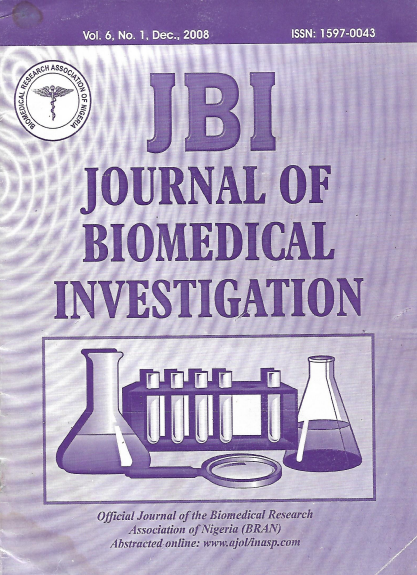Prevalence of Trichomonas vaginalis among pregnant and non pregnant women in Nnamdi Azikiwe University Teaching Hospital Nnewi, Anambra State, Nigeria
Keywords:
Trichomonas vaginalis, Pregnant and non-pregnant womenAbstract
Vaginal trichomoniasis is a recognized Sexually Transmitted Infection (STD with reproductive health complications as well as causing an increase in susceptibility to HIV infection. However few data exist in our environment concerning the pathogen in pregnant and non pregnant women since the HIV epidemic. In this study, 2720 women comprising 1420 pregnant and 1300 non pregnant women were screened for Trichomonas vaginalis. Vaginal swabs of these women were processed using three diagnostic methods viz: - Saline wet preparation, Giemsa staining and culture method using modified chocolate agar. The prevalence of T. vaginalis was 9.3% in both pregnant and non pregnant women. The highest diagnostic yield of 246 (9.04%) was from the culture method while the least 182 (6.7%) was obtained with the Giemsa staining. The women were also screened for HIV infection and 480 (17.7%) were HIV sero-positive with 182 of them having Trichomonas vaginalis infection. At P ≤ 0.05. It was found that there is a significant relationship between trichomoniasis and HIV infection. The culture technique though costly and time consuming is the most sensitive among the three methods used and in view of the relationship between STIs especially Trichomoniasis and HIV infection it becomes pertinent to use a sensitive method to diagnose Trichomonas infection with subsequent proper treatment.




